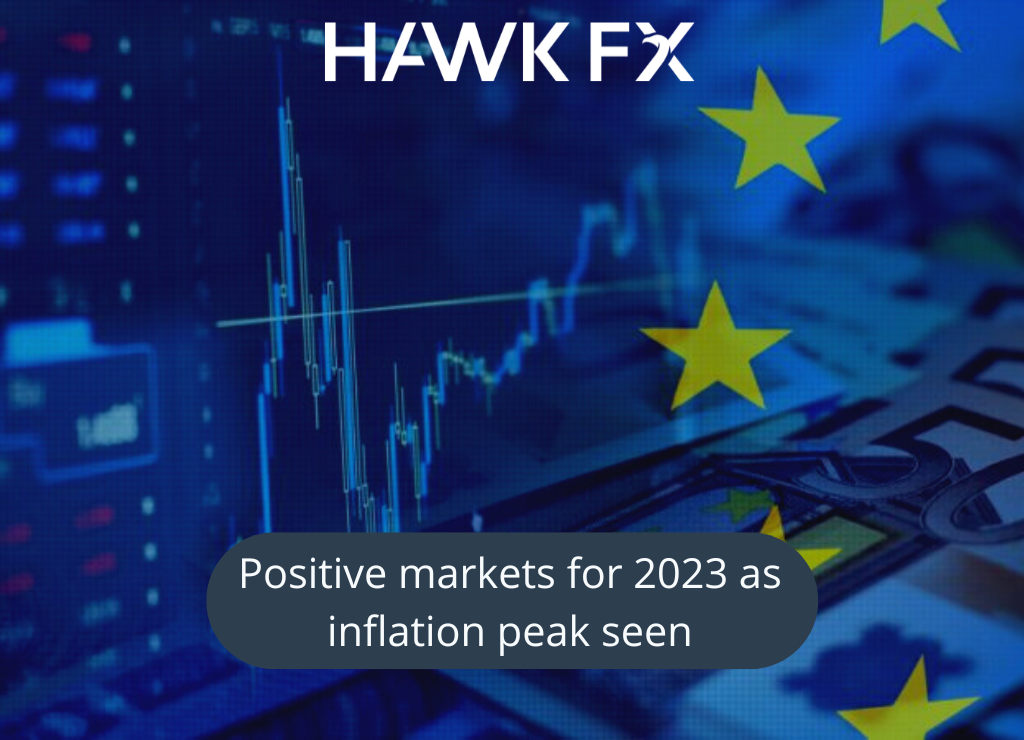
The markets have generally had a positive start to the year. Equity markets in Europe and Asia have posted solid gains. Bond markets are also higher with yields falling on the hope that we are close to a peak in interest rates. The monetary policy update in December from the Bank of England was more hawkish than expected. However, there is a growing expectation that rates may peak by June. There are a number of Bank of England speakers this week. It will be interesting to see their thoughts on evidence of contrasting trends in goods and service sector inflation.
Last week, we had updates to December PMI data which showed weaker activity levels. A sharp fall in economic growth might at least partly offset any boost to equity prices from lower interest rates although at present markets seem hopeful that an early rate peak will raise the odds of a soft landing. This economic growth outlook is another reason for falling interest rate expectations. The Bank of England Decision Maker Panel showed that inflation and wage expectations are still rising, which leaves the Bank with a challenging task ahead this year.
This week, we will get the monthly GDP figure for November. The previous readings were impacted by the timing of the Queen’s funeral (-0.6% in September and +0.5% in October). The November reading will, therefore, give an indication of whether we will see an overall contraction in the fourth quarter. We expect a decline in GDP of around 0.3% based on the weakness of the PMI data. Retail sales in November were also weak and the British Retail Consortium’s sales measure will give an initial indication of activity over the Christmas period. The government is expected to provide details this week of plans to provide support for businesses on energy prices after April.
GBPEUR – 1.1372
GBPUSD – 1.2148
With all eyes on inflation expectations, we saw a larger fall than expected in Eurozone inflation for December to 9.2%. Inflation may well fall further with the fall in global energy prices in early January, which will also ease concerns over energy disruption in Europe this Winter. As with other markets, we did see the core inflation rate rise by more than expected to a record 5.2%. Central banks noted that the fall in energy prices and easing global bottlenecks meant that inflation was likely to fall. They also warned that tight labour markets mean that domestic inflation pressures could stay higher.
The PMI data from the Eurozone last week also suggested a weaker end to 2022. The Eurozone may have entered a recession at the end of 2022, which will also give the European Central Bank a difficult balancing act in 2023. Although inflation was seen as a bigger risk than slowing growth last year, things may change in 2023. Markets expect further rate hikes this year, but at a slower pace and with a peak expected by mid-year. The evolving data and comments from central bank speakers will be key at the start of this year.
EURUSD – 1.0682
EURGBP – 0.8793
The minutes of the December US Federal Reserve meeting was a key piece of data last week. They highlighted the issue of the balance between growth and inflation, whilst confirming the likelihood of further rate hikes early this year. The labour market data showed employment rising by 223,000 in December although earning growth slowed. The ongoing strength in the labour market suggests expectations of further rate hikes seem reasonable. However, a softening inflation outlook and slowdown in the economy lead to expectations that rates may even have to fall by the end of 2023.
This week, the main data is the December CPI reading. It is expected to show another decline in inflation to 6.7%. This would be the sixth fall in a row from the high in June of 9.1%. Much of the fall will be due to energy prices but in contrast to the Eurozone, we expect the core rate to also fall to 5.8%. This will be due to a drop in inflation on goods with the easing of supply bottlenecks. This will again provide a difficult balance for the Fed as inflation in services continues to move higher with domestic pressures from the labour market. As with many central banks, this year will be a balancing act and data and comments from the Fed will be closely watched.
GBPUSD – 1.2148
EURUSD – 1.0682
Do get in touch if you would like to discuss this further.
*Interbank rates correct at 7 am on the date of publishing.